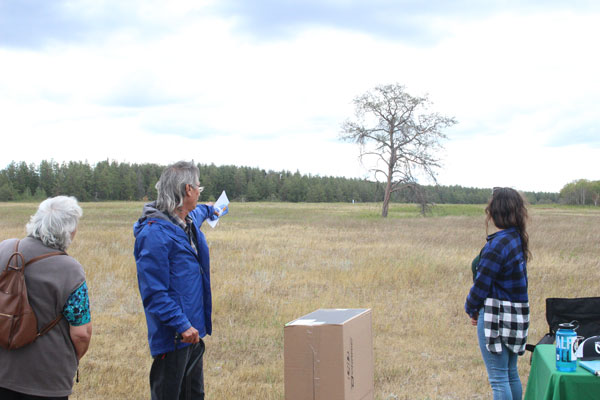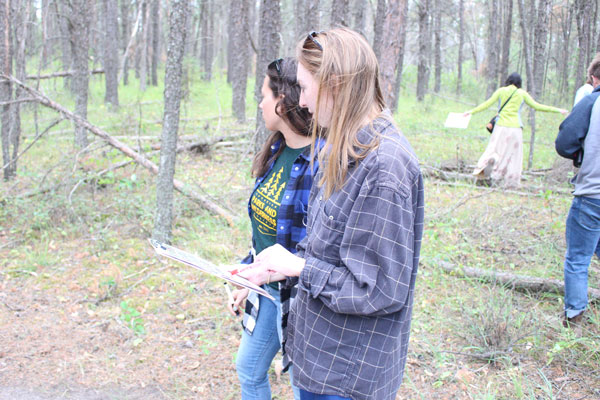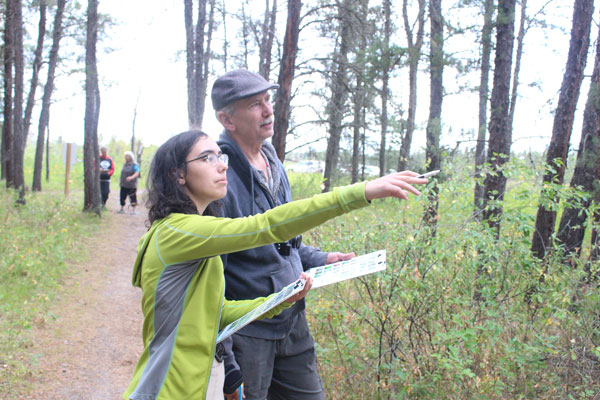
The Prince Albert Model Forest and Canadian Parks and Wilderness Society (CPAWS) Saskatchewan are starting a project to track progress in forests around Prince Albert.
On Sunday evening, the two organizations hosted the first night of a Boreal Bio-Logue.
Following an introduction by Elder Leo Omani, a group of about a dozen interested people explored forest around Little Red River Park before travelling to a forest fire site.
“We are going to spend some time doing some outreach with the people that showed up by identifying species in the forest and then we are going to travel to a forest fire site and do the same thing,” Caitlyn Anhorn of CPAWS said.
The idea was to create an inventory of species that are present in the Boreal forest pre and post-fire.

Elder Omani, a Dakota Elder from Wahpeton, explained some history of the area around Little Red River Park before the group traveled out to identify species.
“In future years we hope to do this again. The dream is to see what grows back year after year after that,” Anhorn added.
Every attendee had a log of species in to find in the forest. On the back of each clipboard was a description so participants can continue the project on their own after the first evening.
According to Model Forest general manager Peter Friedrichson, this serves as essentially the first part of the study.
“This is kind of the baseline study because this area hasn’t burned or anything for a very long time,” he explained. “Hopefully we can see what the forest looks like and then compare it to the burn area over the years and keep doing a record (that) would show how it was coming back, (and) if it’s different from how it was coming back now. I was hoping to fuel further discussions about climate change or what is happening in this area and fire in the area too.”
Friedrichson said there were two aspects to the project. They wanted to get people engaged in the land around them, and looking at what was happening to the environment.

“We have scientists saying that climate change is happening where there are these things going on in the environment around us, but people don’t really see it for themselves or don’t know all of the things that are around them,” he explained.
“This is a way of actually getting people to learn on the ground and engage with collecting scientific data, as well as working with elders and traditional knowledge and kind of making that all meet together. (It’s about) having them have a lived experience and an informed understanding of what’s happening in their local communities.”
The second night took place on Tuesday evening and they hoped to have different people each time. Friedrichsen explained that the time and day placement would encourage people to come with it being in the early evening on both days.
Another point was to get each of the groups some interaction and public exposure.
“For me at least the Model Forest has been around for almost 30 years, but what we have done has really changed. I know for me, where I kind of want to take the organization is bring Prince Albert back in and try to get people engaged in their forests in the community,” Friedrichsen said.
As a member of the Saskatchewan chapter of CPAWS, Anhorn said they were using it to do outreach in Prince Albert and also get people out after the province reopened on July 11.
They also hope to begin this year and grow the project in future years.
“We can get it next year too, hopefully. We can be back here again, hopefully,” he said.
